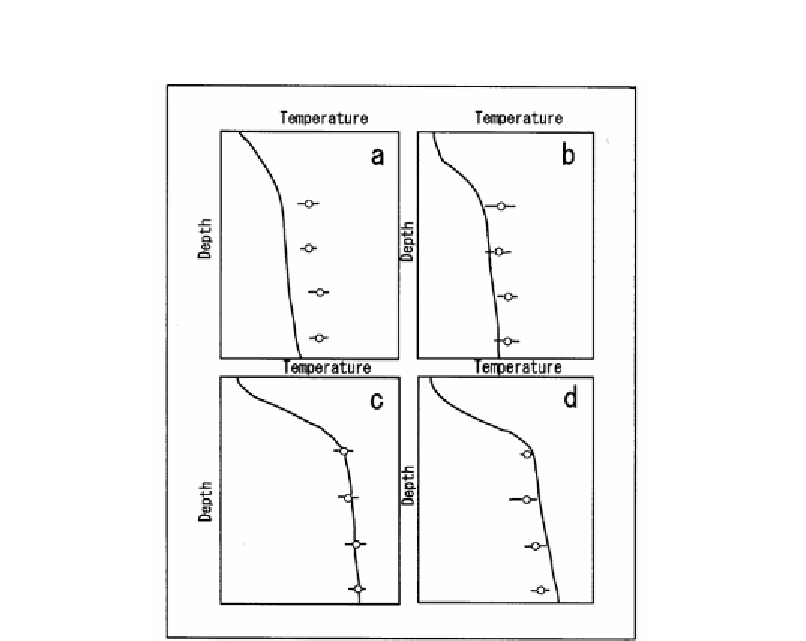Environmental Engineering Reference
In-Depth Information
almost geothermal fields surveyed by the GDPS project, and especially the fluid activity had
ceased at the past days in half of the fields.
Figure 5. Relationship between Th and recovery temperature in a well. Pattern (a) Minimum Th is
largely higher than recovery temperature. Pattern (b) Minimum Th is coincident with recovery
temperature. Pattern (c) Mean Th is nearly equal to recovery temperature. Pattern (d) Maximum Th is
nearly equal to recovery temperature.
2.2. Evaluation of Geothermal Potential
The activity index (AI) is useful to evaluate numerically the potential of a geothermal
field as well as a geothermal well (Hayashi et al., 1981). Based on the AI value, a geothermal
system or a geothermal well can be classified seven categories with decreasing reservoir
temperature as follows: AA above 100, A 100-80, B 80-60, C 60-40, D 40-20, E 20-0 and F
below 0. Very active field belongs to Type A, whereas less active one to Types B or C.
According to Hayashi (1981), almost geothermal fields where the power plant was
established in Japan, such as Matsukawa, Otake, Onikobe and Kakkonda belong to Type A
(AI of 84 to 89), but exceptionally Onuma field belongs to Type B (AI of 68).
Divided the temperature gradient with depth into the conduction and convection types,
the AI value of each exploration well drilled in GDPS fields is shown in figure 6. A symbol
shows a maximum recovery temperature within the depths where Th values were measured in
each well. The AI value of geothermal field is relatively lower for the conduction type than
for the convection type. Patterns (a) and (b) have activity indices lower than 40 (except for

Search WWH ::

Custom Search